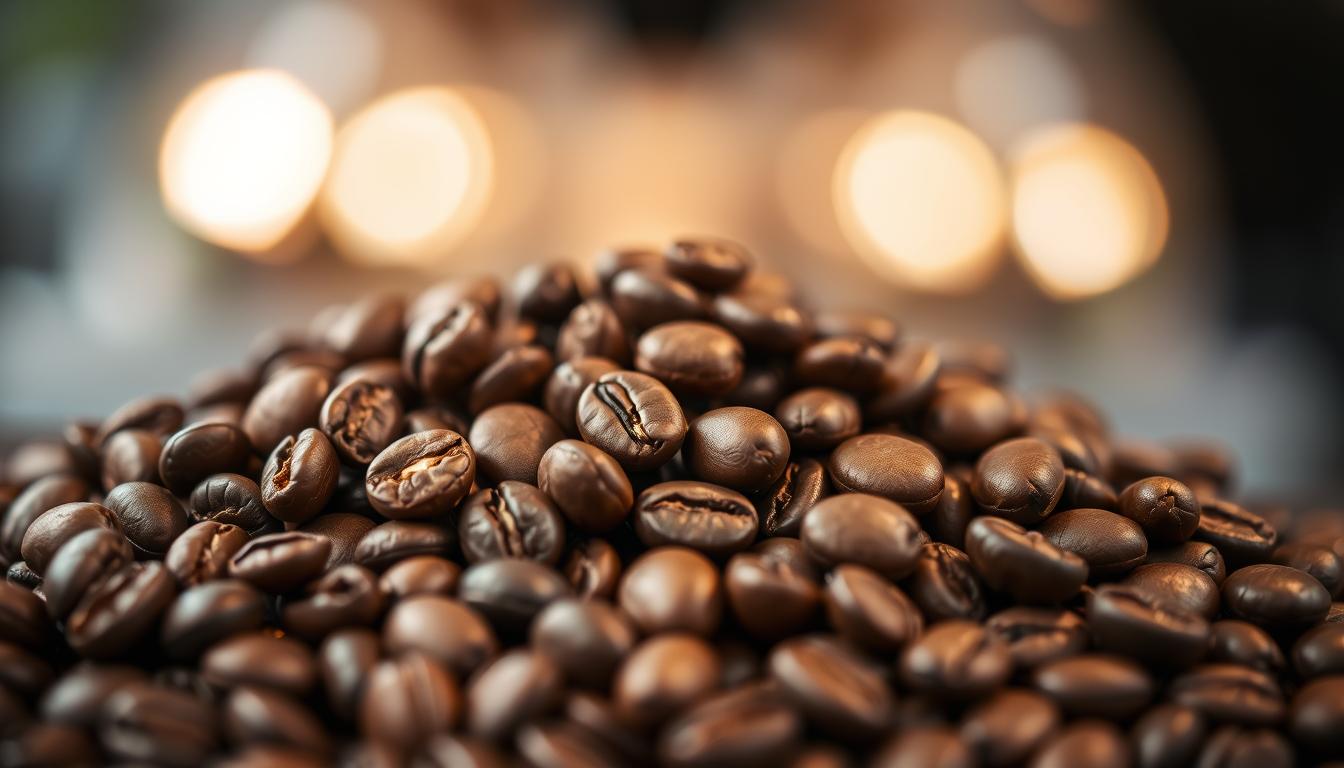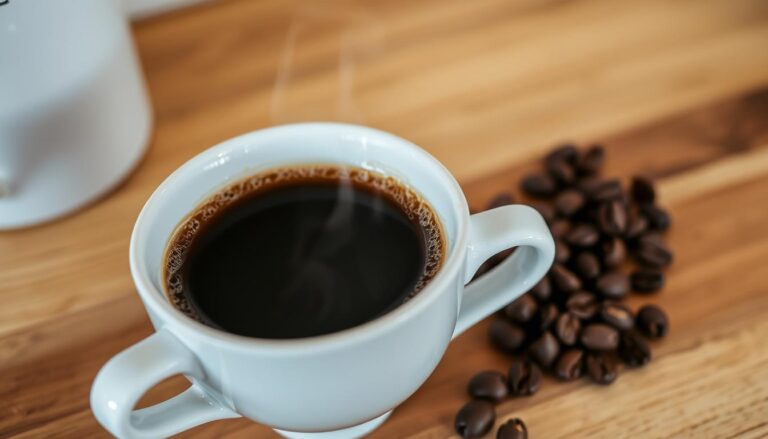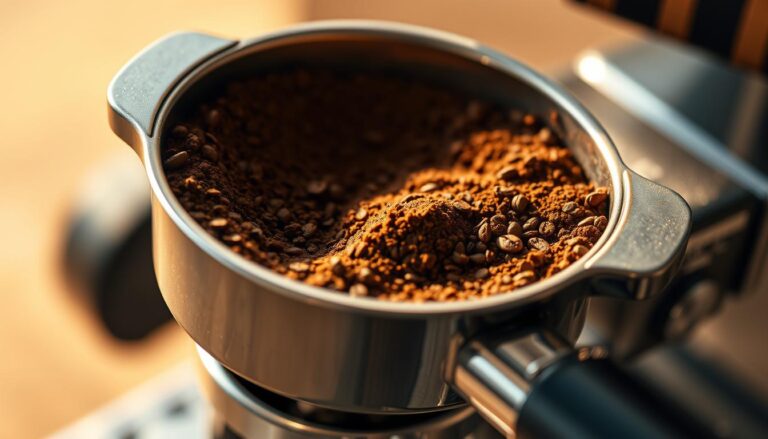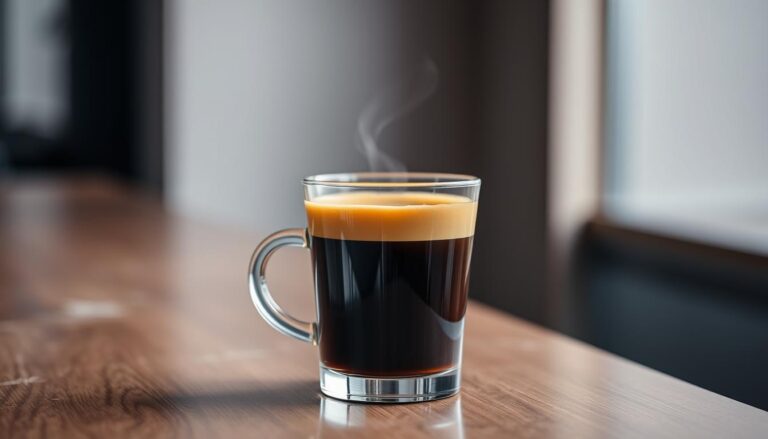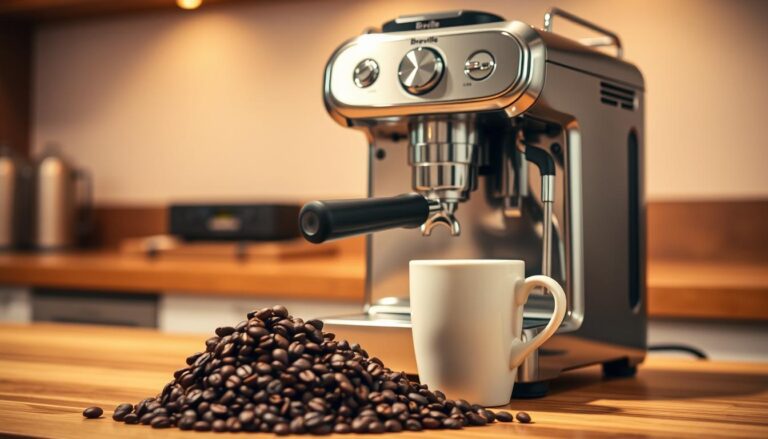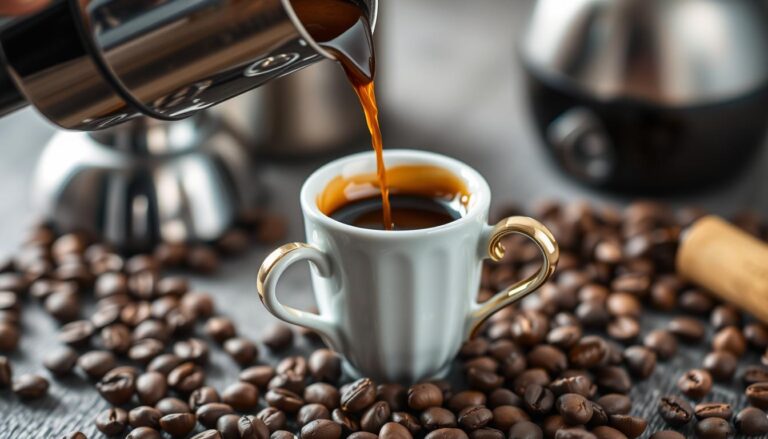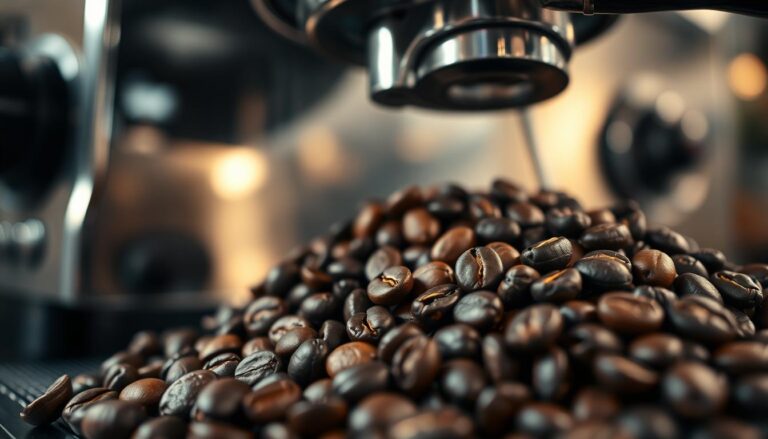Ever thought about making espresso with regular coffee beans? Home espresso brewing is getting more popular. Many people wonder if they can use common coffee beans to make espresso.
This article explores if regular beans can replace special espresso beans. Can you make café-quality espresso at home? With the right skills, you might find that making great espresso is easier than you think.
Espresso and Its Unique Requirements
Espresso is special because of its unique qualities. It’s made by pushing hot water through very fine coffee grounds at high pressure. This creates a strong, rich flavor and a distinct texture.
What Is Espresso?
Espresso is more than just a way to make coffee. It offers a unique coffee experience. Unlike regular coffee, making espresso requires careful timing and temperature control. This ensures a consistent, bold flavor that coffee lovers enjoy.
How Espresso Differs from Regular Coffee
Espresso beans are roasted at higher temperatures than regular coffee beans. This makes their flavor more complex. Espresso has a thicker body and a more concentrated taste than regular coffee. This is due to the finer grind and the pressure used during brewing.
The Grind Size and Extraction Process
The grind size is key for a perfect espresso shot. A fine grind helps extract water well, creating the espresso’s characteristic crema. Understanding grind size and extraction process shows why espresso is special in the coffee world.
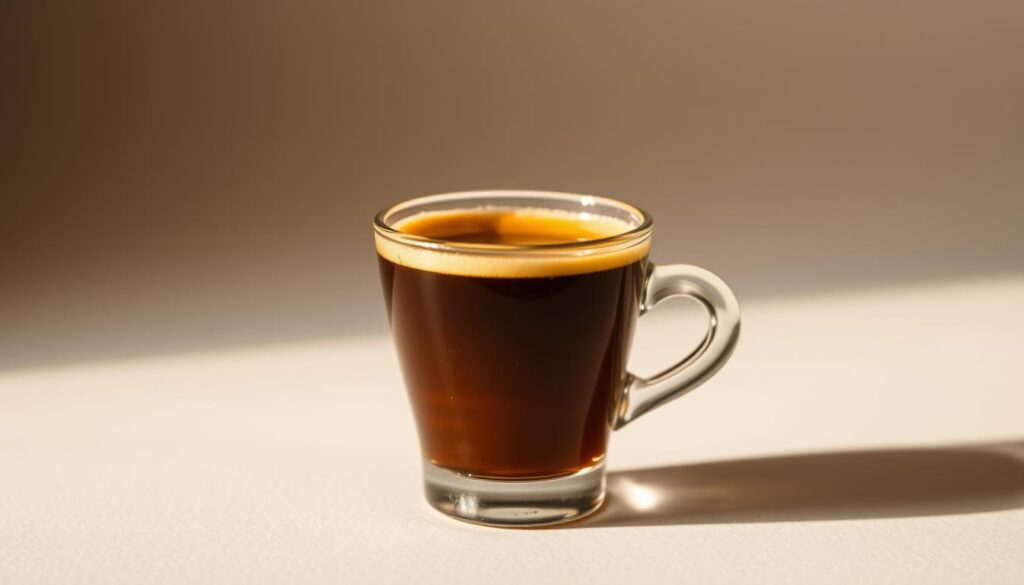
Types of Coffee Beans: Espresso vs. Regular
Knowing the differences in coffee beans is key to making great espresso. Arabica and Robusta are the most common types. Each has its own taste, smell, and brewing method.
Arabica vs. Robusta: What’s the Difference?
Arabica and Robusta beans are quite different:
| Characteristic | Arabica | Robusta |
|---|---|---|
| Flavor Profile | Softer, more nuanced flavors | Bolder, earthy tastes |
| Caffeine Content | Lower caffeine level | Higher caffeine concentration |
| Growing Conditions | Grows in higher altitudes | Thrives in lower elevations |
| Suitability for Brewing Methods | Preferred for espresso and specialty coffees | Commonly used in instant coffee and blends |
Can You Use Arabica Beans for Espresso?
Using Arabica beans for espresso is not only possible but also popular. They make a shot rich in flavor, with a smooth taste. It’s not true that only certain beans make good espresso. What you like matters a lot.
Trying different blends can improve your espresso. It’s all about finding what you enjoy.
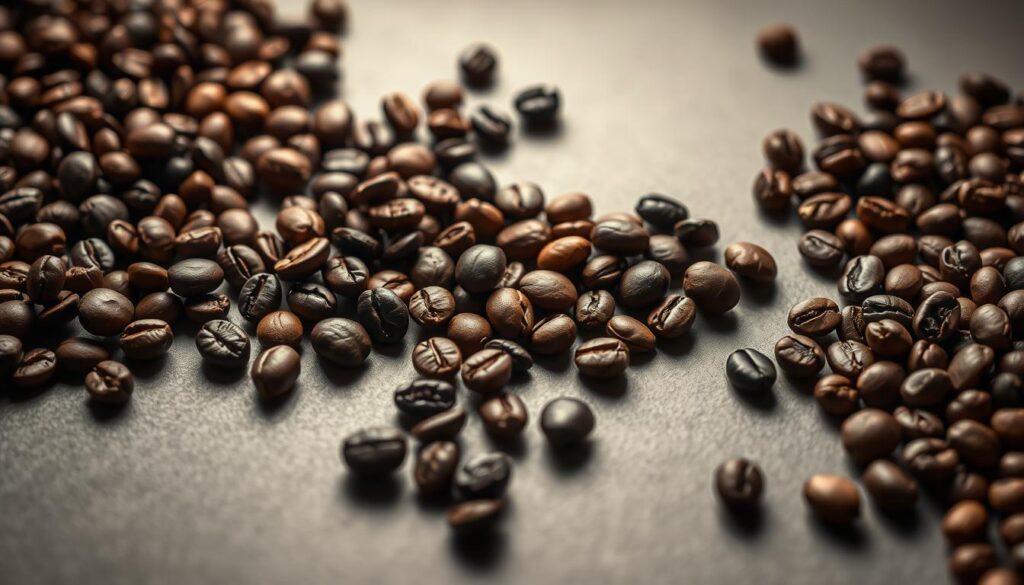
The Importance of Roast Levels
Roast levels are very important for making the perfect espresso. Each roast type has its own flavor and quality. Knowing these differences helps you get the espresso you want.
Light, Medium, and Dark Roasts Explained
There are three main roast levels: light, medium, and dark. Each one gives your coffee a special taste.
- Light Roasts: These beans are lighter in color and have a sharp acidity. They taste bright and floral, but might not be as deep for espresso.
- Medium Roasts: They have a balanced taste with some acidity and rich flavors. This roast keeps more complexity, making it a favorite for espresso lovers.
- Dark Roasts: Dark roasts have a strong taste with less acidity and a fuller body. They often taste like chocolate and smoke. This roast is great for making rich and bold espresso shots.
Ideal Roast Levels for Espresso
For espresso, medium to dark roasts are usually the best. They add deep flavors that make the espresso complex and enjoyable.
Choosing the right roast can make your espresso experience better. It’s important to try different roasts to find what you like best.
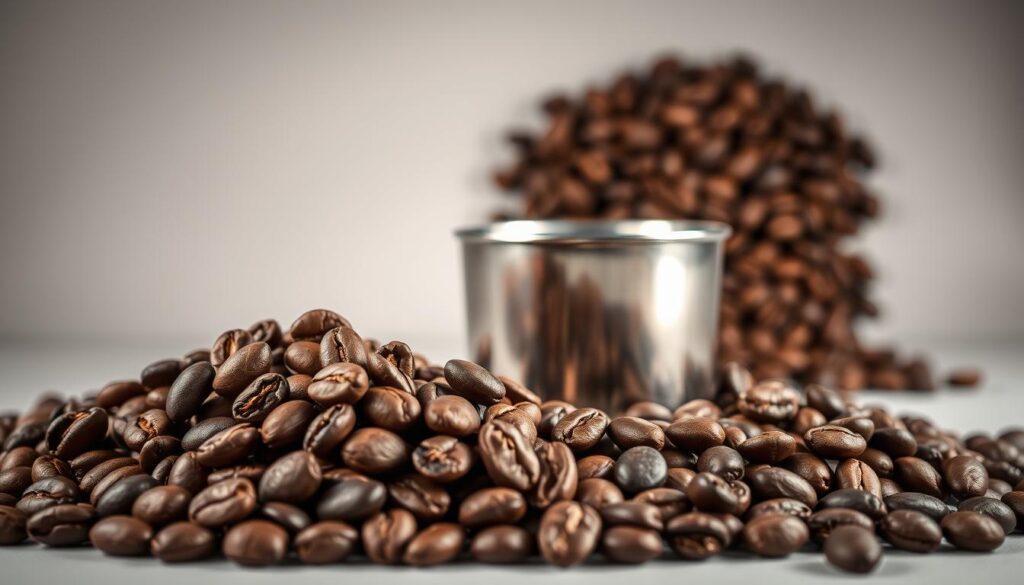
Brewing Techniques and Equipment
Choosing the right equipment is key to making great espresso at home. Espresso machines and coffee makers work differently. Knowing how they differ helps you make the best espresso.
Espresso Machines vs. Coffee Makers
Espresso machines are made for high pressure, which is needed for good extraction. They let you control water temperature and pressure. This is important for rich, flavorful espresso. Coffee makers can’t do this and use the wrong grind, so they’re not good for espresso.
Best Practices for Brewing Espresso at Home
To make better espresso at home, follow these tips:
- Grind Size: Use a fine grind, like sugar or table salt, for the best extraction.
- Tamping Pressure: Press down evenly when tamping to make sure water flows right.
- Water Temperature: Keep the water between 190°F and 205°F for the best taste.
- Timing: Brew for about 25-30 seconds to get the perfect shot of espresso.
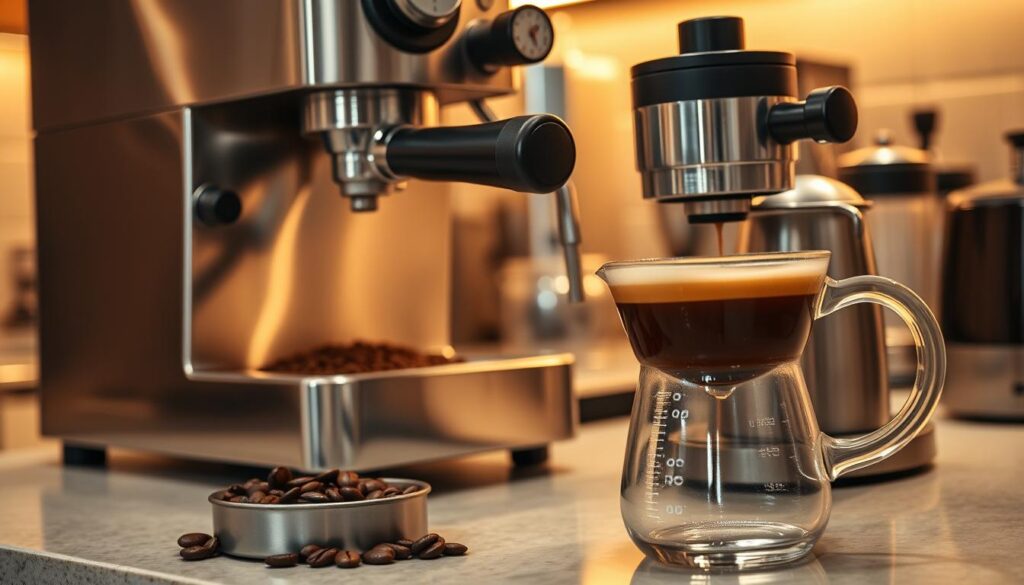
Final Thoughts: Can You Use Regular Coffee Beans?
Exploring espresso, you might ask if regular coffee beans work. While espresso beans have special traits, regular beans have their own perks. Knowing the good and bad can help you choose if they’re right for you.
Pros and Cons of Using Regular Beans
Regular coffee beans are easy to find and affordable. They come in many flavors and prices, making them great for beginners. But, they might not taste as rich or have as good crema as espresso beans.
Tips for Brewing Better Espresso with Regular Coffee
Want to try regular coffee beans for espresso? Start by adjusting the grind size. A finer grind pulls out more oils and flavors, making it richer. Also, play with brew ratios to balance the taste.
Choosing the right roast level is key too. With practice, you can make a great espresso with regular beans. So, start your coffee adventure and see what you can do!

